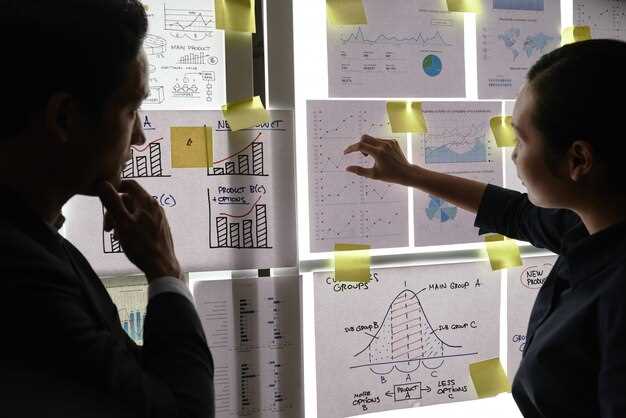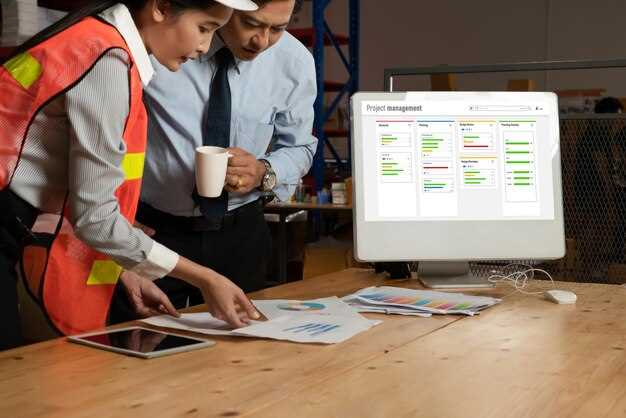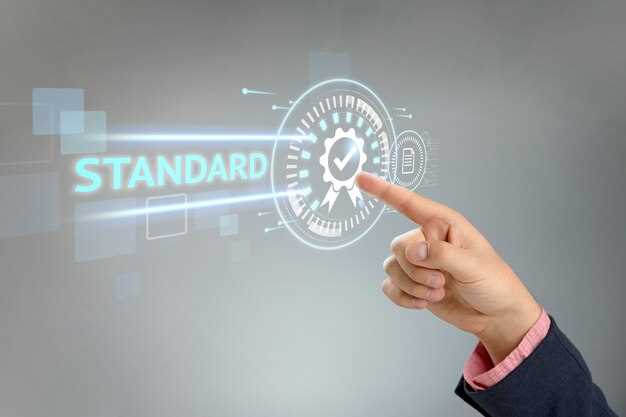Start applying a transparent communication policy across all project stages. Establish clear channels for information flow to keep your team aligned. Regular updates and open dialogue pave the way for early issue identification and foster a collaborative environment. This significantly reduces unexpected disruptions and ensures everyone is on the same page.
Next, prioritize risk identification and analysis as a core phase of project planning. Engage cross-functional teams to provide diverse perspectives and pinpoint potential issues from the outset. A shared understanding among stakeholders allows for a realistic assessment of risks, enhancing the accuracy of your project timelines and resource allocations.
Implement a continuous risk monitoring process. Use project management tools to track risk status and impact dynamically. Adjust your strategies promptly by leveraging data-driven insights. This adaptability ensures that response measures are relevant and proportional to the risks at hand, maintaining project momentum.
Identifying Common Risks in IT Projects

Assess potential scope creep by setting clear project parameters and maintaining open lines of communication with all stakeholders at every stage of the project. This helps in managing expectations and ensuring that all additions or modifications are scrutinized for viability and necessity.
- Unclear Requirements: Minimize this risk by conducting thorough requirement-gathering sessions early on, engaging both technical teams and end-users. Regularly revisit these requirements as the project evolves to ensure alignment and understanding.
- Resource Allocation: Allocate resources efficiently by keeping a dynamic list of project needs versus available skills. Regular workforce assessments can prevent bottlenecks due to inadequate staffing or skill mismatches.
- Technological Constraints: Stay updated with the latest technology trends and tools that could better serve the project. This encourages a proactive approach to incorporating new, more efficient technologies rather than being reactive to technology gaps.
- Project Dependencies: Map project dependencies early to minimize delays. Create robust contingency plans for areas reliant on external suppliers or concurrent project deliverables.
- Change Management: Ensure a formalized change management strategy is in place. Each change request should be evaluated against project goals, timelines, and resources to prevent unnecessary disruption.
- Regulatory Risks: Stay informed about relevant regulations and compliance requirements. Regular audits and compliance checks can catch potential infringements before they escalate into major issues.
- Security Risks: Protect sensitive data by including security measures from the project onset. Regular vulnerability assessments and security audits help in identifying and mitigating potential threats.
Recognizing these common risks early equips project teams with the foresight required to implement preventative strategies, ultimately contributing to the successful completion of IT projects on time and within budget.
Assessing Technological Uncertainty
Identify the specific technologies your project relies on, focusing on those with limited adoption history. Research how these technologies have performed in previous implementations, seeking documented successes and shortcomings. Evaluate the vendor’s stability and track record; reliability is key.
Consider involving subject matter experts to evaluate potential risks associated with integrating new technologies. Their insights can highlight compatibility challenges and underlying issues that may not be immediately apparent.
Develop a detailed risk assessment matrix that outlines potential technological risks, their impact, and likelihood. Categorize risks into levels to facilitate prioritization in mitigation strategies. Here’s a sample table to guide your analysis:
| Risk | Impact | Likelihood | Mitigation Strategy |
|---|---|---|---|
| Integration Issues | High | Medium | Conduct thorough compatibility tests and allocate time for troubleshooting. |
| Vendor Instability | Medium | Low | Maintain backup vendors and ensure open communication lines with current vendors. |
| Obsolescence | Low | High | Implement flexible design allowing for future technology upgrades. |
Regularly update risk assessments as the project progresses and external conditions change. Stay informed about technological advancements that may impact your project, and adjust your risk strategies accordingly. Through proactive assessment, reduce uncertainty and enable more informed decision-making throughout the project lifecycle.
Understanding Project Scope Creep
Define project deliverables in clear, measurable terms to provide a solid foundation for avoiding scope creep. Creating a detailed project plan that outlines specific tasks, responsibilities, and deadlines ensures all team members share a uniform vision and understand their roles. Employ robust change control processes that require a formal review and approval for any additions or alterations, thus maintaining project integrity and avoiding unplanned expansions.
Regular communication with stakeholders keeps everyone aligned and minimizes misunderstandings. Hold frequent check-ins to discuss progress, address potential concerns, and ensure all parties remain informed and engaged. This proactive approach enables early identification of potential deviations from the original scope.
Utilize project management tools to track progress against the initial plan effectively. These tools offer insights into task completion rates, resource usage, and deadline adherence, allowing for the timely identification of areas where scope creep might arise. Adjust resources and timelines as necessary to keep the project on track.
Train the project team in scope management techniques, emphasizing the importance of adhering to defined parameters. Encourage open discussions about potential risks and foster an environment where team members feel empowered to speak up if they notice task divergence.
Document all changes meticulously, including the reasons behind each modification and the expected impact on the project’s timeline and budget. This ongoing documentation provides a valuable resource for preventing future scope creep by highlighting patterns and enabling better decision-making.
Recognizing Resource and Budget Constraints
Prioritize transparency in financial planning by setting a clear budget early in the project lifecycle. Communicate this budget to all stakeholders and ensure that it is realistic by basifying it on thorough research and historical data rather than optimistic estimations. Regularly review financial projections against actual spend to identify variances and adjust accordingly. This helps prevent unforeseen expenses from derailing the project.
In terms of resources, conduct a detailed assessment of team capabilities and availability. Match these with the project requirements to avoid overcommitting team members or falling short of essential skills. Maintain a resource allocation plan that is dynamic and allows for flexibility. This should account for potential changes in timelines or project scope to minimize disruptions.
Implement risk mitigation strategies, such as creating a buffer in both budget and resource allocation. Buffers provide essential breathing room, allowing teams to handle unexpected challenges without impacting the project delivery timeline. Regular communication with vendors and partners regarding budgetary and resource expectations is critical, ensuring all parties are aligned.
Optimize resource utilization by leveraging technology and automation where feasible. Tools that track time, resources, and budget help in maintaining clarity on consumption rates, which aids in quick decision-making. Train the project team to use these tools efficiently, empowering them to take proactive steps to manage their workload and align with budget constraints.
Finally, foster a culture of openness where team members feel comfortable discussing limitations. This open communication culture allows for earlier detection and resolution of issues related to resources and budget constraints, ultimately supporting the project’s success.
Evaluating Stakeholder Requirements and Expectations
Directly engage with stakeholders through structured interviews or surveys to extract specific requirements and expectations. By actively listening and asking targeted questions, capture detailed insights on their needs and success criteria. Gather qualitative data during these sessions and analyze them for recurring themes or critical requirements.
Create a requirements matrix that maps these needs against project objectives. Ensure all requirements align with the project scope and prioritize them based on stakeholder impact and feasibility. Using the matrix, facilitate transparent discussions about potential conflicting requirements, helping to align different stakeholder groups.
Implement an iterative validation process by presenting initial proposals and prototypes to stakeholders. Engage them in feedback loops to confirm understanding and adjust project deliverables accordingly. Planting this routine within the project lifecycle guarantees that expectations remain realistic and allow for dynamic adjustments based on evolving project constraints or opportunities.
Establish clear communication channels and regular feedback sessions to maintain ongoing engagement. Utilize dashboards and project management tools to keep stakeholders informed about progress, changes, and risk management strategies. This continuous contact builds trust and keeps stakeholders invested in the project’s success.
Addressing Security and Compliance Challenges
Ensure that all team members receive continuous security training and certifications. Security threats evolve rapidly, making education a priority. Encourage a proactive approach by holding regular workshops where current threats and prevention techniques are discussed intensively.
- Implement Strong Access Controls: Leverage role-based access control (RBAC) to restrict system access to authorized users only. Regularly review access privileges to align with project needs.
- Perform Regular Audits: Schedule security audits quarterly to identify vulnerabilities and compliance discrepancies. Use automated tools to save time and enhance thoroughness, focusing on both internal and third-party security standards.
- Adopt Secure Development Practices: Integrate security into the software development lifecycle (SDLC). Use secure coding guidelines and tools for static and dynamic code analysis, ensuring potential vulnerabilities are addressed during the development phase.
- Maintain Updated Documentation: Keep documentation current and accessible. Ensure comprehensive records of all security policies, procedures, and changes to facilitate swift response if issues arise.
- Monitor Compliance Continuously: Use automated compliance management tools to track adherence to relevant standards such as GDPR, HIPAA, and others. Establish alerts for non-compliance and implement corrective actions promptly.
Transparency is key in mitigating risk; maintain open lines of communication between stakeholders regarding security status and compliance measures. Reporting structures should be clear and concise, facilitating informed decision-making. Empower teams with the autonomy and resources needed to address issues quickly and effectively, minimizing security and compliance risks.
Implementing Risk Mitigation Strategies

Identify specific risks by conducting a thorough risk assessment at the project’s planning stage. Gather input from all stakeholders to ensure that no potential issues are overlooked. By creating a detailed risk register, track identified risks alongside their potential impacts and likelihoods, prioritizing them effectively.
Develop robust communication plans to keep team members and stakeholders informed throughout the project’s life cycle. Regular updates help in swiftly addressing any issues that arise, minimizing the impact of identified risks.
Establish contingency plans for high-priority risks by allocating necessary resources and defining clear action steps to implement if those risks materialize. Ensure team members are well aware of their roles in executing these plans to maintain seamless operations.
Adopt agile methodologies to make your project adaptable to change. By breaking the project into smaller, manageable sprints, the team can regularly reassess risks and adjust as needed. This approach allows for rapid problem-solving and reduces the chance of risks escalating.
Regular risk audits conducted by an independent team can provide an unbiased perspective on the project’s risk management efforts. Use insights gained from these audits to make necessary adjustments, ensuring ongoing alignment with risk mitigation goals.
Employ advanced tools and software for real-time risk monitoring. Automation in tracking risk indicators can provide early warnings, offering that crucial time needed to respond effectively.
Encourage a culture of risk awareness within your team, promoting proactive identification and reporting of potential risks. Regular training sessions can equip team members with the skills to recognize and address security vulnerabilities or operational inefficiencies before they escalate.
Developing a Comprehensive Risk Management Plan
Clearly identify potential risk areas early, focusing on technical, financial, and operational aspects. Gather insights from varied team members to ensure a holistic view. Create a prioritized list of risks, evaluating both their likelihood and potential impact. This allows targeted intervention efforts for each specific issue.
Assign dedicated risk owners, ensuring accountability and continuous monitoring. Use a risk matrix to visualize and assess the position of each risk in terms of its probability and impact. This tool facilitates better decision-making when determining the focus and resources required.
Implement regular risk audits as part of your project’s lifecycle. Schedule systematic reviews to reassess and update risks, adapting mitigation plans accordingly. Regular communication with stakeholders ensures transparency and builds confidence in the project’s risk management capabilities.
Incorporate risk management into the project’s culture with workshops and training sessions. Boost awareness and empower the team to engage actively with risk identification and problem-solving, fostering a proactive environment.
Utilizing agile methodologies can help handle unforeseen challenges by allowing flexibility and iterative adjustments. Continuously refine strategies based on real-time data and feedback, ensuring alignment with the project’s objectives.
Document every step, modification, and outcome related to risk management meticulously. Easily accessible documentation aids in historical analysis of risks and knowledge transfer for future projects, offering invaluable learning opportunities for the team.
Utilizing Agile Methodologies to Adapt to Changes
Prioritize flexibility by incorporating regular sprint reviews and retrospectives to identify areas for improvement. These iterative sessions enable teams to evaluate progress, adapt to client feedback, and implement changes swiftly, ensuring alignment with project goals.
Incorporate cross-functional teams to enhance collaboration and facilitate knowledge sharing. Diverse skill sets within teams empower members to respond effectively to unexpected challenges, fostering a collective ability to pivot and adjust project trajectories efficiently.
Implement Kanban boards to visualize workflows and bottlenecks, providing immediate insight into task statuses. This transparency aids teams in reallocating resources effectively, ensuring tasks are completed in alignment with shifting project priorities.
Encourage direct and continuous communication with stakeholders. Regular updates help maintain transparency, allowing for early detection of potential issues and providing opportunities for adjustments to be made proactively.
Emphasize the use of minimum viable products (MVPs) which allow for the testing and validation of ideas quickly without committing extensive resources. Releasing MVPs enables teams to gather critical feedback and refine products incrementally, increasing adaptability to market needs.
Foster an environment of continuous learning by organizing workshops and training sessions. Keeping team members updated with the latest Agile practices and tools enhances their capability to embrace changes efficiently within the project lifecycle.
Enhancing Communication and Coordination Among Teams
Utilize a centralized communication platform for all project-related discussions to minimize misunderstandings and ensure everyone is on the same page. Implementing tools like Slack or Microsoft Teams improves access to information, reducing dependency on email threads and promoting active engagement. Create dedicated channels for different teams or projects to streamline communication and keep discussions organized.
Regularly schedule cross-functional meetings to align objectives and share progress. Weekly or bi-weekly sessions using video conferencing tools can reinforce understanding and foster collaboration. Encourage participants to share updates concisely, focusing on key achievements, challenges, and the next steps.
Define clear roles and responsibilities at the project’s onset to avoid task overlaps and ensure accountability. Encourage transparency by documenting decisions and action items in shared documents or project management tools like Trello or Asana. This practice keeps everyone informed and allows team members to see how their contributions fit into the bigger picture.
Invest in building strong relationships among team members to enhance trust and collaboration. Organize virtual team-building activities or informal catch-ups to promote a sense of camaraderie, essential for smoother communication and conflict resolution.
Establish a feedback loop where team members can express concerns and suggestions candidly. Incorporate tools like Google Forms or anonymous surveys to gather insights, which can be discussed during team meetings for continuous improvement in communication strategies.
Video:

Expert’s Guide to Project Risk Management (All You Need to Know)
Expert’s Guide to Project Risk Management (All You Need to Know)
Q&A:

How can I identify potential risks in an IT project early on?
Identifying potential risks in an IT project at an early stage starts with conducting a thorough risk assessment during the project’s initial phases. Engage with stakeholders to gather insights and leverage their experience. Utilize risk identification tools such as brainstorming sessions, checklists, and SWOT analysis. Furthermore, reviewing past projects for recurring issues can provide valuable foresight into potential risk areas.
What strategies can be used to mitigate identified risks in IT projects?
To mitigate risks in IT projects, you can implement several strategies: (1) Risk Avoidance: Alter project plans to circumvent the risk altogether. (2) Risk Reduction: Implement actions to reduce the likelihood or impact of the risk. (3) Risk Sharing: Partner with third parties to manage the risk, such as through outsourcing. (4) Risk Acceptance: Acknowledge the risk and prepare a contingency plan if it materializes. Regular risk monitoring and adaptive project management practices also support successful risk mitigation.
What role does communication play in managing IT project risks?
Communication is critical in risk management for IT projects. It ensures all team members and stakeholders are aware of potential risks and the strategies to address them. Regular updates through meetings and reports help maintain transparency and enable timely decision-making. Establishing clear channels for communication minimizes misunderstandings and ensures everyone can respond effectively to emerging risks.
Can project management software aid in IT project risk management?
Yes, project management software can significantly aid in risk management by offering tools for tracking, analyzing, and reporting risks. These platforms often include risk logs, automated alerts, and dashboards that provide real-time insights into potential issues. Software tools facilitate better documentation and help ensure all team members have access to up-to-date information about project risks.
How often should risk assessments be conducted during an IT project?
Risk assessments should be conducted at the beginning of a project and at regular intervals throughout its lifecycle. The frequency can vary depending on the project’s complexity and duration. Generally, after key milestones or significant changes, a reassessment is advisable. Regular evaluation helps in promptly identifying new risks and adjusting risk management strategies as necessary.
How can an IT project manager identify potential risks early in a project’s lifecycle?
An IT project manager can identify potential risks early by conducting thorough risk assessment workshops. These workshops involve gathering stakeholders to brainstorm possible risks and challenges related to the project. Additionally, using tools such as SWOT analysis or a risk breakdown structure can help in categorizing and analyzing risks systematically. Regular consultation of historical data from past projects can also be beneficial in spotting recurring issues.
What strategies can be employed to mitigate communication-related risks in IT projects?
Effective communication is pivotal in reducing risks associated with misunderstandings in IT projects. A clear communication plan is essential, outlining the channels, frequency, and methods for project updates. Utilizing collaboration tools like Slack, Microsoft Teams, or project management software with integrated communication features ensures that team members and stakeholders can stay informed and engaged. Furthermore, setting regular meetings and updates can help in catching potential issues early, while fostering a culture of openness encourages team members to voice concerns, creating a more proactive approach to problem-solving.



